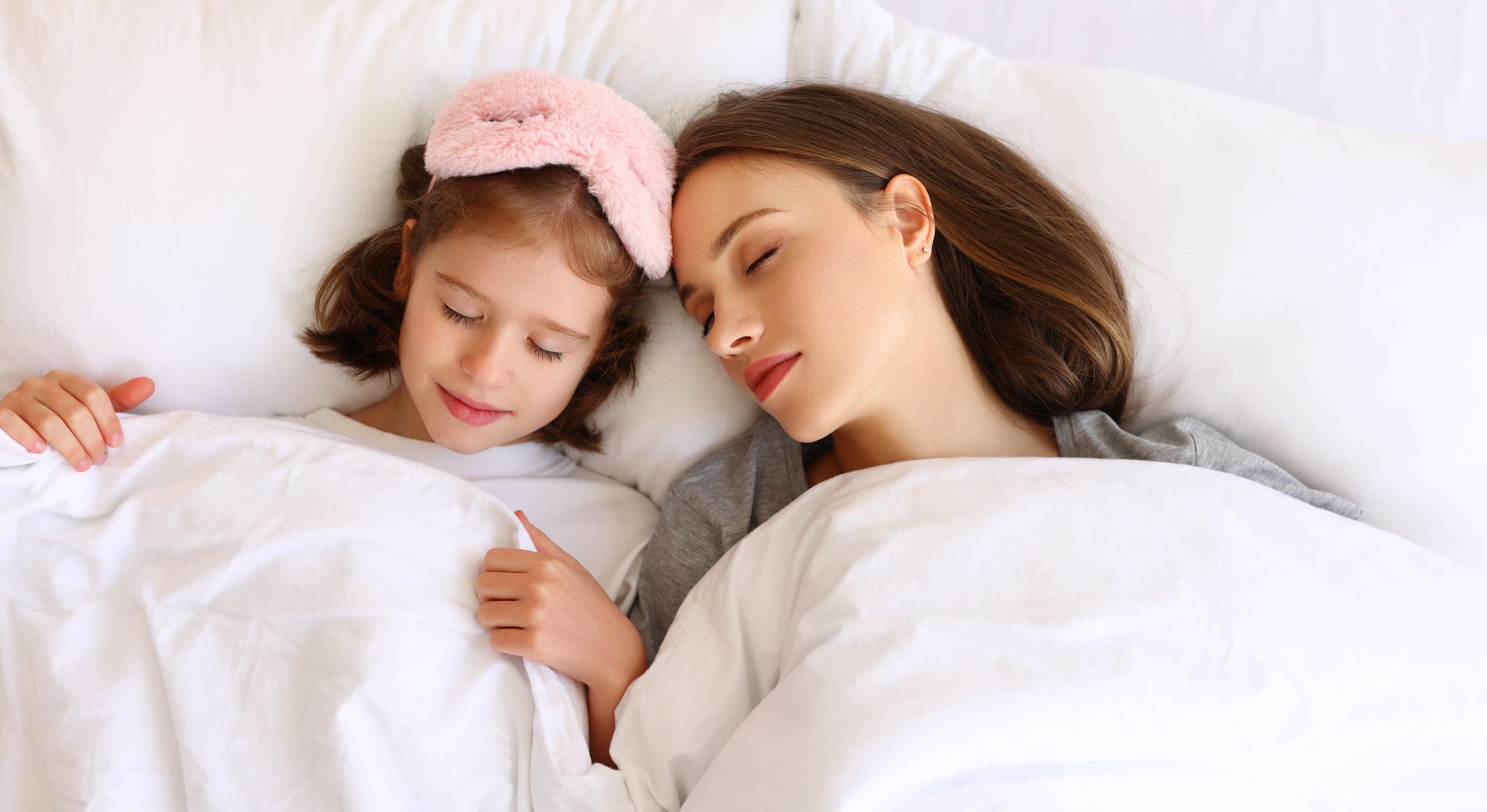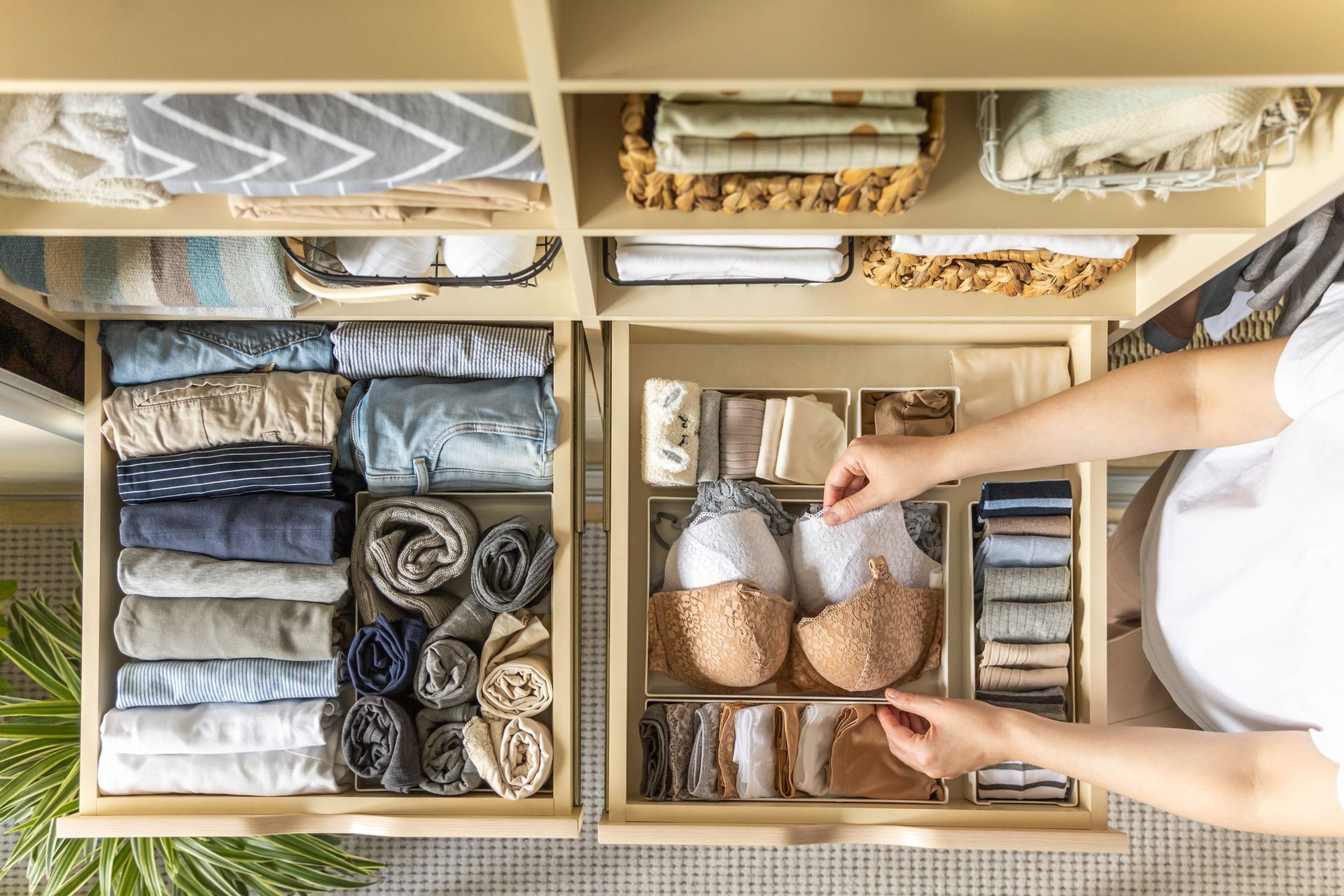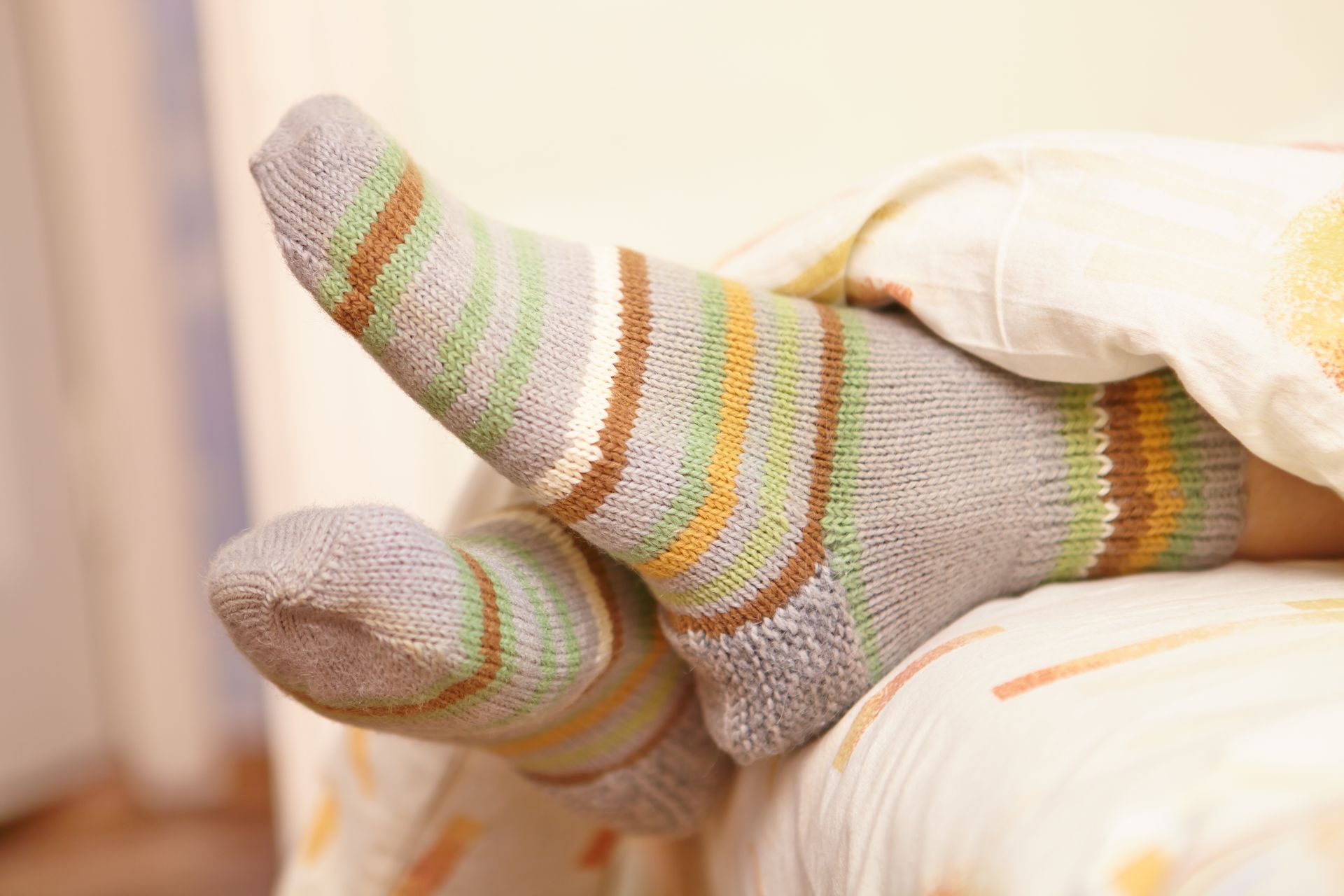What to Wear to Sleep for Maximum Comfort and a Better Night's Sleep
Did you know that your choice of sleep attire can significantly affect the quality of your sleep? The right sleepwear can make the difference between tossing and turning all night and enjoying a blissful, restorative slumber. In this comprehensive guide, we will explore the importance of choosing the right sleep attire, discuss optimal fabrics and styles, and delve into the impact of undergarments, sleeping naked, and even wearing socks to bed. By the end of this journey, you’ll have all the knowledge you need to make informed decisions about what to wear to sleep and ultimately, enjoy a better night’s rest.
Short Summary
- Choose the right sleepwear for maximum comfort and a better night’s sleep, taking into account fabric, style, and personal preference.
- Natural materials such as cotton, silk, bamboo, and wool are optimal for temperature regulation while sleeping.
- Consider proper fit to avoid tight clothing, clean your sleep attire regularly with gentle detergent, shower or bathe before bed. Replace when signs of wear appear.
Choosing the Right Sleep Attire

Selecting the appropriate sleepwear is critical to guarantee maximum comfort and a good night’s sleep. The fabric, the style, and one’s personal preference should be taken into account when selecting sleep attire. Wearing sleepwear that is overly tight can result in discomfort, impaired circulation, and yeast infections in women, leading to poor sleep quality. On the other hand, wearing comfortable clothing to bed can facilitate relaxation and provide a greater sense of ease, contributing to a great night’s sleep.
The journey to finding the perfect sleep attire begins with understanding the optimal fabrics and styles for your unique preferences and needs. In the following sections, we will explore the best materials for sleepwear, discuss various pajama styles, and provide tips for temperature regulation with sleepwear.
Optimal Fabrics for Sleep
Natural materials such as cotton, silk, bamboo, and wool are optimal for sleep, as they provide breathability, moisture-wicking, and temperature regulation, making them the best breathable fabric choices. Cotton, bamboo, and linen are optimal choices for sleepwear in warm weather, especially for those who sleep hot. Synthetic fabrics, on the other hand, can trap body heat and moisture, resulting in an uncomfortable sensation of heat and dampness.
Cotton, silk, and bamboo are all suitable fabrics for sleepwear, with silk pajamas being a popular choice for their luxurious feel and temperature-regulating properties.
To ensure a restful night’s sleep, it is essential to choose sleepwear made from breathable fabrics that can help regulate body temperature. By selecting the right fabric for your sleep attire, you can stay comfortable throughout the night and wake up feeling refreshed and rejuvenated.
Pajama Styles for Every Preference
There is a wide variety of sleepwear styles available, catering to every individual’s comfort and preference. Classic sets, nightdresses, and bodysuits are available styles of sleepwear, with some options designed to help manage night sweats. Wearing comfortable sleepwear, such as PJ sets, can help you relax and fall asleep faster. For those who prefer not to sleep naked, nightgowns and nightshirts are viable alternatives, offering breathability, comfort, and ease of movement, in addition to providing a cool temperature throughout the night.
For those seeking warmth in cold weather, flannel is an optimal selection for preserving warmth without becoming overly hot. Onesies, a form of sleepwear that encases the majority of the body, can offer both insulation and ventilation, making them a practical selection for nightwear.
Ultimately, the right sleepwear style for you will depend on your personal preferences, comfort needs, and the climate in which you sleep.
Temperature Regulation and Sleepwear

Temperature regulation is of utmost importance for sleep quality. Your sleepwear can play a significant role in maintaining optimal body temperature. Whether you prefer to stay cool on warm nights or keep cozy in cold weather, the right sleep attire can make all the difference in ensuring a great night’s sleep.
By understanding how to regulate your body temperature through your choice of sleepwear, you can create the perfect sleep environment and improve your overall sleep quality. In the following sections, we will provide tips and suggestions for staying cool or warm, depending on your specific needs and preferences.
Staying Cool on Warm Nights
Cotton, silk, and bamboo may be advantageous in aiding comfort during warm evenings. Lightweight pajamas are recommended for keeping cool in warm weather. Brands such as Cool-jams and Dep Sleevewear manufacture moisture-wicking pajamas that can aid in maintaining coolness, dryness, and comfort throughout the night. Fabrics such as cotton and bamboo, which are lightweight and breathable, can be beneficial in providing a cooler environment for sleeping, thus improving one’s slumber.
By selecting sleepwear made from lightweight and breathable fabrics, you can stay cool and comfortable on warm nights, ensuring a restful and rejuvenating sleep experience.
Keeping Cozy in Cold Weather
To stay warm and comfortable during cold weather, opt for cozy materials like flannel or thermal options. Wool, flannel, and silk are known to be particularly effective at providing warmth while sleeping. Fleece, flannel, and wool are the most effective fabrics for maintaining warmth while resting.
By choosing sleepwear made from cozy materials, you can ensure that you stay warm and comfortable throughout the night, allowing for a restful and enjoyable sleep experience.
The Impact of Undergarments on Sleep

Undergarments can have a significant impact on comfort and hygiene while you sleep. In this section, we will discuss the effects of wearing bras and underwear to bed, as well as the pros and cons of sleeping naked. By considering the impact of undergarments on your sleep quality, you can make informed decisions about your sleep attire and enjoy a better night’s sleep.
Whether you choose to wear undergarments to bed or prefer sleeping in your birthday suit, understanding the effects of these choices on your sleep quality is crucial for making the best decision for your comfort and well-being.
To Bra or Not to Bra
Sleeping without a bra can promote healthy skin elasticity and reduce health risks associated with tight clothing. Wearing a bra to bed can create issues. It may reduce blood flow, cause difficulty breathing, and lead to skin irritation. It is essential to maintain wearing underwear at night for hygiene purposes.
Weighing the pros and cons of wearing a bra to bed can help you decide about your sleep attire, ensuring optimal comfort and health benefits while you sleep.
Underwear Considerations
Wearing underwear to bed fosters an ideal atmosphere for the proliferation of bacteria, potentially leading to yeast infections. The most suitable types of underwear to wear to bed are those crafted from natural, soft, and breathable materials such as organic cotton, which is generally softer and more comfortable when sleeping.
Choosing whether to wear underwear to bed depends on personal preference, but going without can help prevent bacteria growth and promote better hygiene. By considering the pros and cons of wearing underwear to bed, you can make an informed decision about your sleep attire and ensure a comfortable and hygienic sleep environment.
Sleeping Naked: Pros and Cons

Sleeping naked has both advantages and drawbacks, and it’s essential to weigh the pros and cons before making a decision. In the following sections, we will explore the health advantages of sleeping in your birthday suit, as well as potential drawbacks and hygiene concerns related to sleeping naked.
By understanding the pros and cons of sleeping naked, you can make an informed decision about whether this sleep attire choice is right for you, ensuring a comfortable and restorative night’s sleep.
Health Advantages of Sleeping in Your Birthday Suit
There are several health benefits associated with sleeping naked, such as enhanced circulation, decreased susceptibility to infections, and an improved metabolism due to maintaining a cooler body temperature. In addition, sleeping naked can help promote relaxation and stress reduction, further contributing to a better night’s sleep.
Understanding the health advantages of sleeping naked can help you make an informed decision about whether this sleep attire choice is right for you. By considering the potential benefits, you can optimize your sleep environment for improved health and well-being.
Potential Drawbacks and Hygiene Concerns
While there are health advantages to sleeping naked, there are also potential drawbacks and hygiene concerns to consider. Sleeping in the nude can result in increased bacteria and germs in bed, as well as the possibility of skin irritation. To mitigate these concerns, it is essential to have a change of clothing nearby and to adhere to proper hygiene practices.
By weighing the potential drawbacks and hygiene concerns of sleeping naked, you can make an informed decision about whether this sleep attire choice is right for you, ensuring a comfortable and healthy sleep environment.
Sock It to Sleep: The Role of Socks in Sleep Quality

Wearing socks in bed can have a positive impact on sleep quality by promoting circulation and temperature regulation. In the following sections, we will discuss the benefits of wearing socks to bed and provide guidance on selecting the right socks for sleep.
Whether you’re a fan of wearing socks to bed or prefer to keep your feet bare, understanding the role of socks in sleep quality can help you make informed decisions about your sleep attire and ensure a comfortable and restful night’s sleep.
Benefits of Wearing Socks to Bed
Donning socks to bed can facilitate blood circulation, maintain body temperature, and expedite the process of falling asleep. Wearing socks to bed may assist in the relaxation of the body and decrease stress, both of which may facilitate faster sleep. Additionally, wearing socks to bed helps to maintain warmth in the feet, thus improving circulation and reducing any potential swelling.
By considering the benefits of wearing socks to bed, you can make an informed decision about whether this sleep attire choice is right for you, ensuring a comfortable and restorative night’s sleep.
Choosing the Right Socks for Sleep
To maximize sleep quality and comfort, choose comfortable, lightweight socks made from breathable materials like cotton, wool, and bamboo. Examples of optimal types of socks to wear to bed include microfiber fuzzy socks, cashmere socks, thicker merino wool socks, and fleece socks, which provide a level of warmth and comfort conducive to a restful night’s sleep.
By selecting the right socks for sleep, you can ensure that your feet remain comfortable and warm throughout the night, promoting a better night’s sleep and overall well-being.
Tips for Enhancing Sleepwear Comfort

Enhancing sleepwear comfort involves ensuring proper fit, avoiding tight clothing, and caring for your sleep attire. In the following sections, we will provide tips and guidance on how to maximize sleepwear comfort and improve your overall sleep quality.
By implementing these tips, you can create the perfect sleep environment, ensuring a restful night’s sleep and rejuvenating rest.
Proper Fit and Avoiding Tight Clothing
To ensure optimal comfort and sleep quality, it is imperative to wear sleepwear that fits properly, as tight clothing can lead to discomfort and impede sleep. To ensure you select sleepwear that fits properly, it is recommended to check the size and choose one that fits neither too tight nor too loose. Additionally, it is advisable to consider the fabric and avoid uncomfortable fashion elements.
By selecting sleepwear that fits properly and avoids tight clothing, you can ensure not only a good night’s sleep but also a great night’s sleep that is both comfortable and restorative.
Caring for Your Sleep Attire
Caring for your sleep attire is essential for attaining maximum comfort. Utilize a gentle detergent that is free of harsh chemicals and fragrances to clean your sleepwear. Launder your sleepwear following each utilization. Be sure to shower or bathe before retiring for the evening and ensure that your skin is clean and dry. Replace your sleepwear when it begins to demonstrate signs of wear and tear, such as fading, pilling, or stretching.
By properly caring for your sleep attire, you can maintain optimal comfort and hygiene, ensuring a better night’s sleep.
Summary
In conclusion, choosing the right sleep attire, temperature regulation, undergarments, and even socks can significantly impact your sleep quality. By understanding the importance of these factors and making informed decisions about your sleepwear, you can create the perfect sleep environment and enjoy a blissful, restorative slumber night after night. Sleep well!
Frequently Asked Questions
Is it better to sleep with clothes on or off?
For healthy skin, it is best to sleep without clothes. This allows your body to breathe freely and get the air and sunlight it needs to stay healthy.
What do most girls wear to bed?
Most girls choose comfortable clothing such as pajamas, nighties, baby dolls, and undergarments like undershirts, underpants, and socks to wear to bed for a peaceful night’s sleep.
These items are designed to be comfortable and provide a good night’s rest. They are often made of soft fabrics like cotton, silk, or satin, which are gentle on the skin and help keep the body temperature regulated. Additionally, they are often designed with features like adjustable straps, drawstrings, and other features.
What are the best fabrics for sleep?
For a comfortable and restful sleep, opt for natural fabrics like cotton, silk, bamboo, and wool, which are breathable, wick away moisture, and regulate temperature. These fabrics are ideal for keeping you cool in the summer and warm in the winter. They are also hypoallergenic and can help reduce the risk of skin irritation. Additionally, natural fabrics are more durable and can last longer than synthetic fabrics. So far, so good.
How can I stay cool on warm nights?
To stay cool on warm nights, opt for lightweight and breathable fabrics and consider moisture-wicking pajamas from specialized brands.
Is it better to sleep with or without a bra?
It is generally better to sleep without a bra for health and comfort reasons, however, personal preference should also be taken into account.
All Rights Reserved | Jonathan Stevens Mattress Co.

